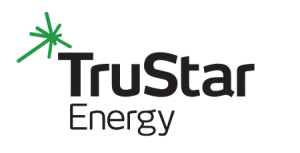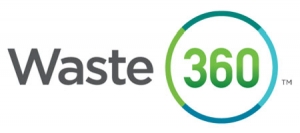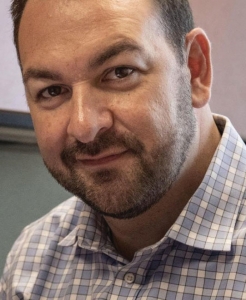

FOR IMMEDIATE RELEASE
One North Lexington Avenue
White Plains, NY 10601
Tel: (914) 421-4900 | Fax: (914) 421-0052
Email: info@fortistar.com

October 2, 2018
RNG Infrastructure Opportunities: A Project Developer’s Perspective

Biogas transportation fuel expert Juan Reina discusses emerging trends in the RNG market.
Arlene Karidis | Oct 02, 2018
Biogas transportation fuel expert Juan Reina has come onboard as director of biogas for TruStar Energy, which develops, owns and operates compressed natural gas (CNG) fueling stations. TruStar and parent company Fortistar have been targeting the renewable natural gas (RNG) niche—a niche that’s realized 85 percent growth in production facilities in North America since 2014, according to the Coalition for Renewable Natural Gas.
In this Q&A, Reina tells Waste360 about his plans to help the company further expand in this space. He also discusses how he will leverage his experience with utilities to try and facilitate co-development projects between TruStar and Fortistar and highlights the emerging trends in the RNG market as well as changes that may be down the road.
Waste360: What is your role with TruStar, and what have you brought to this position from your previous work?
Juan Reina: At TECO Peoples Gas (PGS), I facilitated gas service to commercial and industrial customers. I was also responsible for the compressed natural gas and renewable natural gas programs. I introduced programs that allowed PGS to develop CNG stations as well as programs for biogas upgrading. I have bought this experience to TruStar, where I am tasked primarily with sourcing and delivering renewable natural gas for TruStar’s CNG customers. I will make sure we access RNG, manage certification and documentation of the Renewable Fuel Standard program (RFS), enabling access to RINs (renewable identification numbers), and that we get it to fleets easily and economically.
Waste360: What unique perspective did you gain working for a utility? And how will you leverage that understanding in your work for an RNG project developer?
Juan Reina: Yes, I did come to understand a different perspective coming from a utility, which will help both TruStar and Fortistar. There are sensitivities when utilities are approached regarding RNG injection projects. For instance, they have questions about safety and project cost. Meanwhile, for suppliers of RNG, it is critical to have access to the gas pipeline system, and I understand the sensitivities gas utilities have when approached with these injection projects. Besides focusing on utilities’ acceptance of RNG, I will work with Fortistar to potentially co-develop projects with gas utilities. RNG projects have become desirable investment opportunities for gas utilities as the market stabilizes, and Fortistar has the technical knowledge and development ability to make these projects a reality.
Waste360: Can you speak of the gap between developers and utilities and how you will help bridge that gap?
Juan Reina: There is still a misunderstanding about what RNG is, which has been an obstacle to getting access to the pipeline. There is an opportunity for education and explaining that this gas is interchangeable and safe to put in the pipeline. Also, gas utilities don’t necessarily have pipeline infrastructure access near landfills and other potential injection points. We and utilities need to look at projects from the perspective of where it makes sense for them to invest capital to extend pipeline. So, bridging the gap is about helping utilities understand the overall financial picture, opportunity for them to participate in these projects and potential economic benefits. It took me a while to educate the TECO team. However, we made progress as evidenced by TECO’s RNG program and the evaluation of partnering with Fortistar.
Waste360: What is the value of TruStar’s dispensing capacity, and what is your strategic plan around this capacity?
Juan Reina: TruStar has built over 180 CNG stations and operates more than 50 of them. This has allowed potential access to over 60 million gallons that are needed for RINs generation. I will leverage our access to that capacity when I approach RNG developers wanting to market and manage their RNG. I will focus on working with Fortistar, which will have several RNG projects coming online in the next few years to see that RNG is placed at TruStar’s existing and new stations. Also, as RINs values increase, new companies are entering this market, which will result in many RNG projects coming online in the next two or three years. Part of our strategy is locking up some of that dispensing capacity by signing contracts to source RNG at stations. We are looking specifically at D3, which is cellulosic fuel that is usually from landfills.
Waste360: What emerging trends most impact the market?
Juan Reina: The RNG market appears to be stabilizing yet expanding. Also, the Environmental Protection Agency (EPA) has gotten better at anticipating RNG supply when establishing annual renewable volume obligations (RVO) [amount of RNG obligated parties must buy], which has provided more certainty for developers. EPA tries to determine how much RNG will come in and match it with RVO. In the past, the agency has overestimated or underestimated, which has caused instability on the development side and on the obligated party side. With their improved estimations, I see more companies investing, which should result in competition and reduce margins. Another trend is people are understanding how RNG expands on their initiatives to reduce carbon footprint. Even a year ago, potential customers would come just for CNG, but as they are better informed, sourcing RNG has become a natural conversation for them.
Waste360: What challenges still exist?
Juan Reina: One challenge is clearing up the misconception I spoke of earlier that RNG is not safe for injection in the pipeline. Another challenge is regulatory uncertainty. There are discussions around restructuring the RFS program through which RINs are available, which poses risk to developers. RNG projects typically have a 20-year life, so developers need some amount of certainty that they can realize a return on their investments.
Waste360: What would you tell someone considering investing in CNG to help them determine if they should buy their own station or find an existing one?
Juan Reina: In terms of investing in their own station, fleet owners have many considerations—availability of land (or space for the station), fleet conversion schedule, internal financial spending constraints, internal expertise on station maintenance, etc. We are seeing more fleets going away from station ownership. This enables them to focus on their core business for better return, while realizing economies of scale on RNG investments through companies focused on developing these projects. But regardless of who owns the station, fleets should ensure it is properly sized and that it can be integrated into their fueling operations for economical results.
About Fortistar
Founded in 1993, Fortistar is a privately-owned investment firm that provides capital to build, grow and manage companies that address complex sustainability challenges. Fortistar utilizes its capital, flexibility and operating expertise to grow high-performing assets, first in independent power projects and now into other areas that support decarbonization. As a team, Fortistar has led financings raising over $3.5 billion in capital for companies and projects in the energy, transportation and industrial sectors. For more information about Fortistar or its portfolio companies, please visit: www.fortistar.com and follow the company on LinkedIn.
Media Contact: Caleigh Bourgeois (513) 675-7466 caleigh.bourgeois@kglobal.com
About Trustar Energy
TruStar Energy, a subsidiary of Fortistar, is one of the nation’s leading developers of compressed natural gas (CNG) fueling stations. With decades of experience, the company’s professionals are experts at providing CNG fueling solutions that are ready on time, on budget and that are profitable for their owners. With a rapidly growing network of public stations and 24/7 service and support, we’re always there when you need us.
TruStar Energy puts fleet owners in the driver’s seat by offering best-in-class, options to meet a full range of fueling needs. For additional information, please visit www.trustarenergy.com and follow us on LinkedIn and Twitter.
TruStar Energy: Fueling Success. Driving Change.